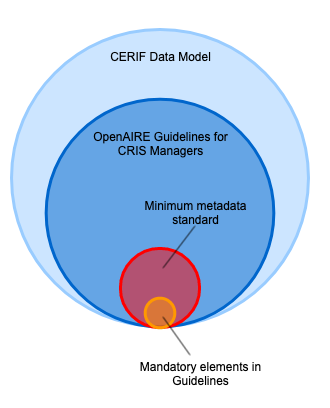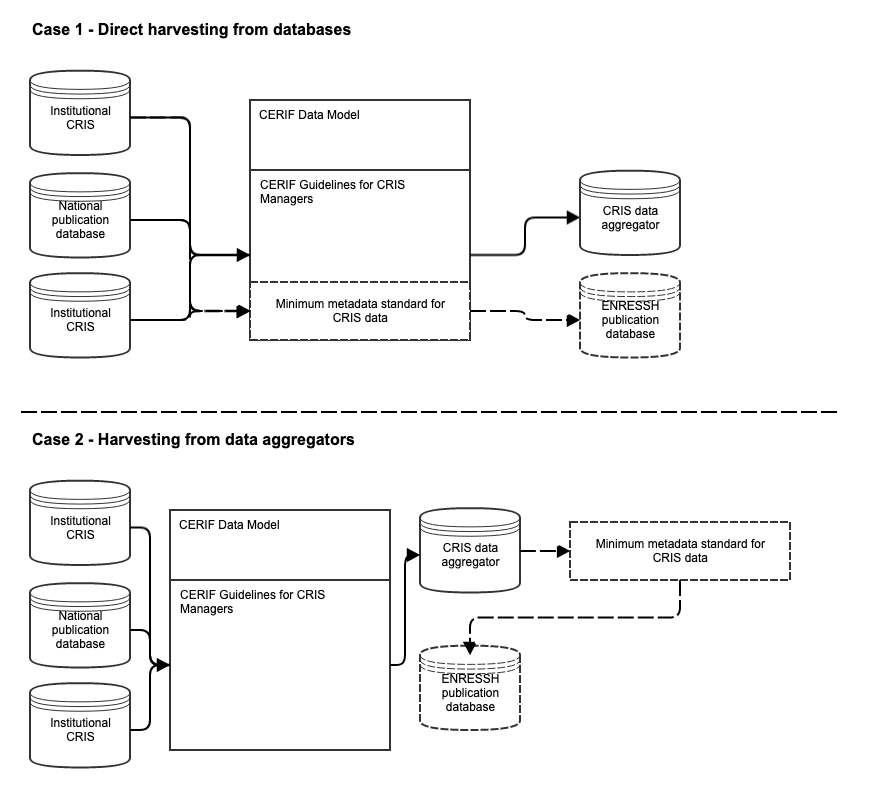Summary
- Propose a minimum set of metadata (based on CERIF data model) that can be used in CRIS metadata exchanges
Based on the CERIF data model the Guidelines for CRIS Managers have set the bare minimum of metadata to be mandatory in metadata harvests
→ For purposes of monitoring and / or research, the metadata requirements are not sufficient in Guidelines. These use cases need to be taken into account if and when CRIS data is to be aggregated
→ Guidelines do not currently support inclusion of institutional/national documentation on metadata and institutional/national criteria on e.g. what is determined as "article" or "scientific" in databases is is missing
→ In the context of ENRESSH and research of publishing in SSH fields, a metadata has to be at a sufficient level
→ One of the goals of the ENRESSH is to design a roadmap for a European database for SSH outputs. A proof of concept VIRTA-ENRESSH was built up - especially for SSH but not excluding others fields either.
→ Common European standardization and data content need to be defined in collaboration with ENRESSH - “lowest common denominator” + additional optional information

Things to keep in mind
- Focus on publications set only, or include others as well?
- Of minimum elements, which are relevant to other sets?
- Inclusion of emerging outputs (data sets, researcher activities) might lead to worse data quality
- How and if this kind of minimum metadata standard can be implemented
- And on what level?
- Could be used on a separate ENRESSH publication database
- Could be used as a reference for e.g. OpenAIRE harvesting
- Euro-Virta pilot
- To some extent have already explored the topic on minimum metadata set
- Authority lists (journal lists etc.) to support the quality aspect of publication metadata
- Could be used to bypass some of the problems e.g. in field of science classification and/or quality aspects
- Use of common vocabularies
- Use of data vocabulary tools like yhtee
- Manual of good practices (SSH databases)
Supporting documents:
Proof of Concept of a European database for Social Sciences and Humanities publications
https://dspacecris.eurocris.org/bitstream/11366/682/4/VIRTA-ENRESSH-POC_CRIS2018_Puuska.pdf
Sīle, L. et al. (2017). European Databases and Repositories for Social Sciences and Humanities Research Output. Antwerp: ECOOM & ENRESSH. DOI:10.6084/m9.figshare.5172322
http://enressh.eu/wp-content/uploads/2017/09/2017_ENRESSH_European_Databases.pdf
Towards the integration of European research information
https://dspacecris.eurocris.org/handle/11366/593
https://openaire-guidelines-for-cris-managers.readthedocs.io/en/latest/index.html
CERIF-tietomallin määrittely OpenAIRE tiedonsiirrossa
https://docs.google.com/document/d/1Rm4OMOUf3JEti6aLmCrnSilX-sbutknFTR7njeItmBc/edit?usp=sharing
